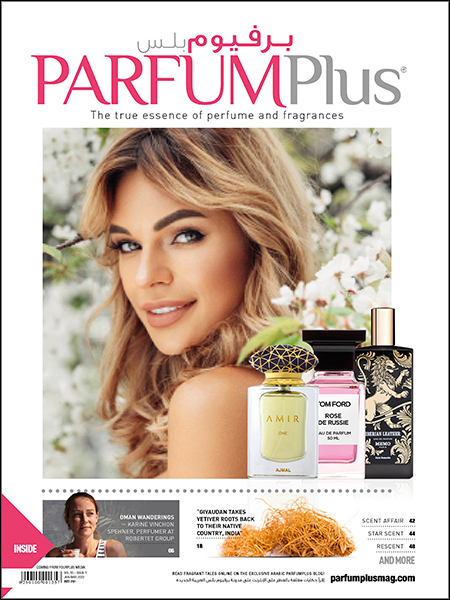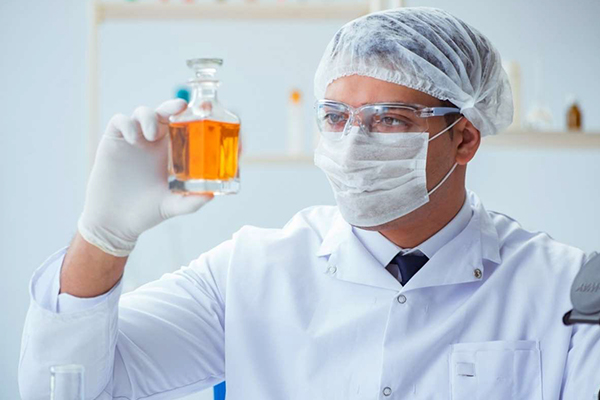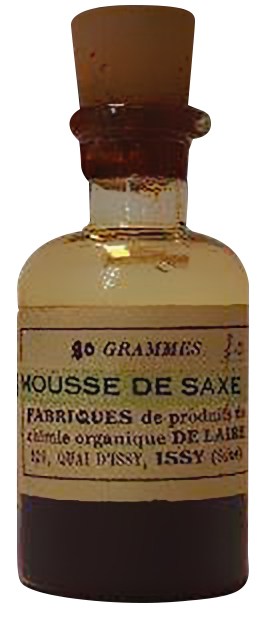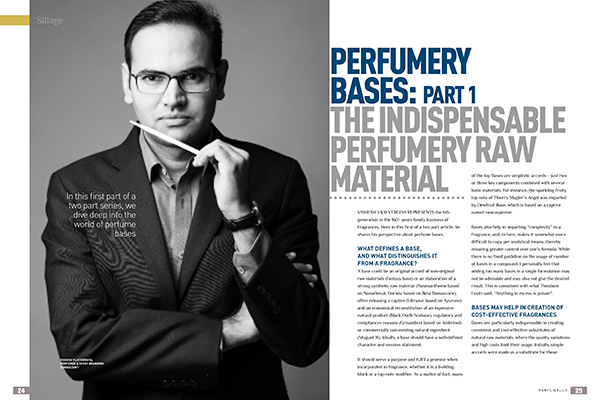Read this post in
 Arabic
Arabic

Perfumery Bases : Part 1 The Indispensable Perfumery Raw Material
In this first part of a two part series, we dive deep into the world of perfume bases
Vishesh Vijayvergiya represents the 6th generation in the 160+ years family business of Fragrances. Here in this first of a two part article, he shares his perspective about perfume bases.
What defines a base, and what distinguishes it from a fragrance?
A base could be an original accord of non-original raw materials (Fantasy base) or an elaboration of a strong synthetic raw material (Paramantheme based on Nonadienal, Dorinia based on Beta Damascone), often releasing a captive (Ultrazur based on Azurone) and an economical reconstitution of an expensive natural product (Black Oudh Scobase), regulatory and compliances reasons (Grisambrol based on Ambrinol) or commercially non-existing natural ingredient (Muguet 16). Ideally, a base should have a well-defined character and mission statement.
It should serve a purpose and fulfil a promise when incorporated in fragrance, whether it is a building block or a top-note modifier. As a matter of fact, many of the top Bases are simplistic accords – just two or three key components combined with several basic materials. For instance, the sparkling fruity top note of Thierry Mugler’s Angel was imparted by Dewfruit Base, which is based on a captive named neocaspirene.
Bases also help in imparting “complexity” to a fragrance, and, in turn, makes it somewhat more difficult to copy per analytical means, thereby ensuring greater control over one’s formula. While there is no fixed guideline on the usage of number of bases in a compound, I personally feel that adding too many bases in a single formulation may not be advisable and may also not give the desired result. This is consistent with what Theodore Levitt said, “Anything in excess is poison”.

Bases may help in creation of cost-effective fragrances
Bases are particularly indispensable in creating consistent and cost-effective substitutes of natural raw materials, where the quality variations and high costs limit their usage. Initially, simple accords were made as a substitute for these natural raw materials. For example, a blend of Benzyl Acetate, Amyl Cin. Ald. and Indole made a Jasmine Base; Terpineol, Heliotropin and Cinnamic Alcohol formed a Lilac Base, while Vanillin and Labdanum formed an Amber Base.
However, it should be noted that no matter how technically advanced these molecules and blends are, they cannot completely replace the natural product – the complexity and enchantment bestowed to a compound via natural ingredients is singular and unmatched.

Old bottle of popular De Laire Base - Mousse De Saxe
At times, the purpose of a base is not to hide a captive but to assist the perfumer in easily incorporating an overly powerful or difficult to dose chemical. These Bases are designed to help the creative perfumer in handling a tricky, high intensity raw material. A classic example is Isobutyl Quinoline, which with its extremely powerful, leathery personality was beyond the understanding of most perfumers when it was initially launched. Perfumers did not know what to do with this powerful molecule, how to dose it and how to handle it! To the rescue of perfumers came Mousse De Saxe based on IBQ and paved way for the legendary perfumes like Chamade by Guerlain (1969), Nuit de Noel (1922), and many others.
Another example would be Paramantheme based on Nonadienal – an exceptionally powerful material, which in isolation can be overpowering and difficult to dose correctly. Such potent ingredients are carefully and diligently worked upon by perfumers and AI (Artificial Intelligence) to create Bases thereby enabling easy incorporation in a formula – by novice and expert perfumers alike!
When you approach a perfumery house for the development of a fragrance for your new product launch, say a Soap or Incense Sticks, they have two possible approaches - either to start from scratch or work around a prefabricated block, a perfume Base - and modify it in accordance with the need and demand of the perfume brief, thereby expediting the development process.
The former is gaining more momentum now due to obvious advantages – speed, convenience, and modularity!
In my personal experience, I have observed that there is a misconception pertaining to the usage of bases. Some perfumers are reluctant in using them, thinking they simply are using someone else’s creation.
As a matter of fact, Edmond Roudnitska, one of the greatest perfumers of all times, widely used bases in his creations. So did master perfumer Jean-Claude Ellena, mentioning Cassis Base 345 as a part of his collection in the book, “Perfume - the Alchemy of Scent”. Iconic perfumes like Chamade by Guerlain (1969), Chanel 19 (1971), and Angel by Thierry Mugler (1992) would not have existed without these Bases. Amongst other popular bases are Lilas 7 (a renowned Lilac Base) and Dianthine (based on the scent of Carnation).
Hence, perfumers must try to use a readily available Base wherever possible and avoid the temptation to work only with their creations – it saves time, and it gives the perfumer an opportunity to benefit from the experience of another expert. Even Isaac Newton thought it prudent to learn from the expertise of others when he said “If I have seen further than others, it is by standing upon the shoulders of giants” Bases provide the building blocks, the x-factor, the desired top note, that sought-after twist, and that much needed complexity to possibly defy GC-MS analysis!
(To be continued in Part 2)
- Vishesh Vijayvergiya
Disclaimer - The information in this article is offered as an aid to the Perfumer’s creativity only and has no regulatory significance at all. This information should not be relied upon as any warranty for the ingredient’s performance in any end product. It is the perfumer’s responsibility to fully test and satisfy themselves when determining if the ingredient is suitable for use in a customer’s end product. It is recommended that the user should check the safe use with the IFRA as well as local regulatory requirements. E. & O. E.
© FourPlus media
Read this post in
 Arabic
Arabic






